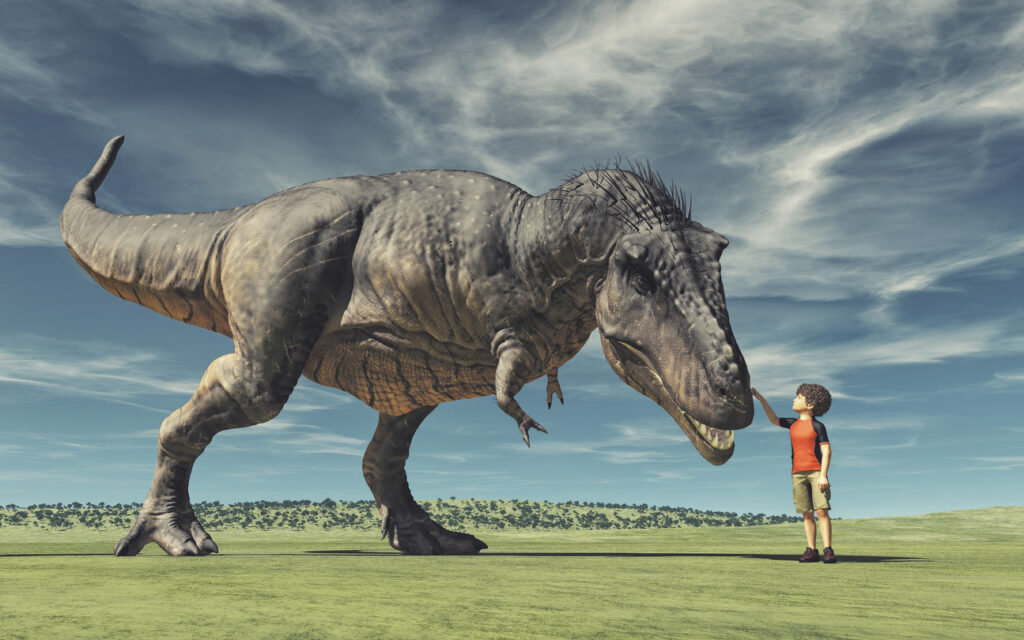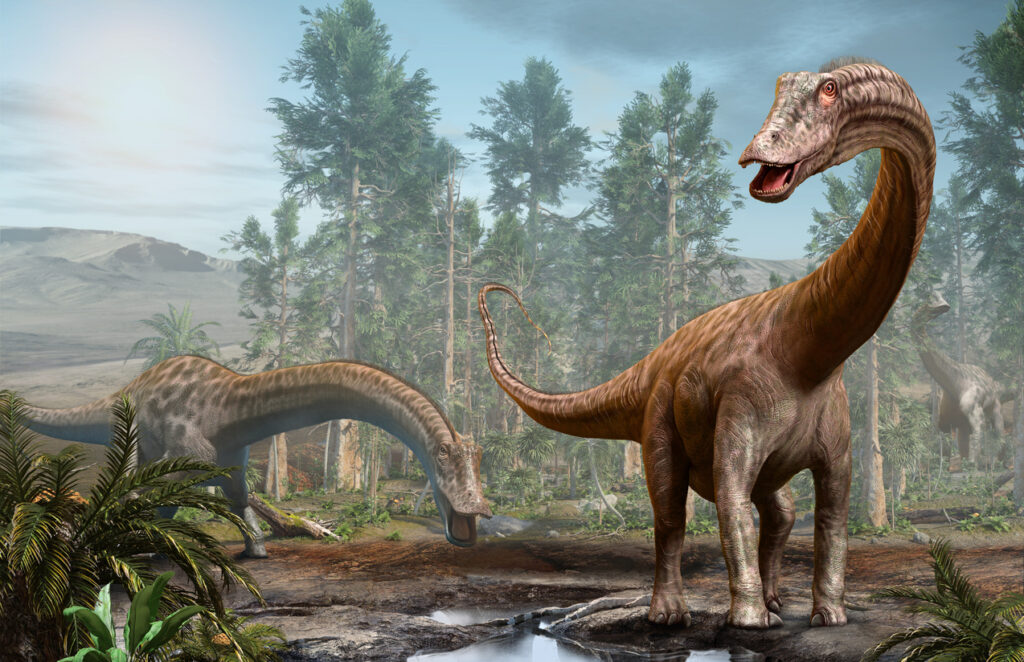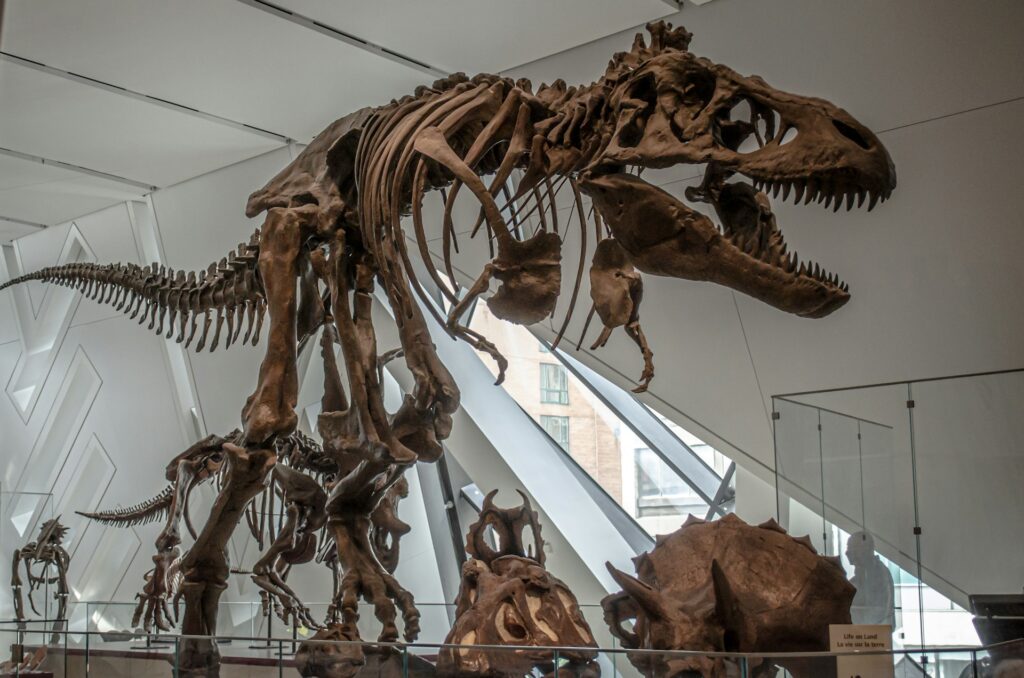
It sounds wild, but there’s a genuine scientific theory suggesting that dinosaurs might be partly to blame for why humans (and mammals in general) age as fast as we do. The idea is rooted in how our ancient mammalian ancestors adapted to survive in a world ruled by giant reptiles. Instead of evolving to live long, they evolved to live fast, and that survival-first mindset may have shaped the way we age today. Here are 10 ways dinosaurs might’ve unknowingly set the ageing clock ticking for us.
Our ancestors had to stay small.
Back when dinosaurs ruled the Earth, early mammals had to keep their heads down — literally. Most were tiny, lived underground, and came out mostly at night to avoid becoming dinner. Because of that, their bodies adapted to grow up fast, reproduce early, and not hang around too long. Longevity wasn’t exactly a priority when your main goal was just staying alive for another day.
This meant less evolutionary investment in things like tissue repair, immune resilience, or cellular upkeep — all the bits that would’ve helped extend lifespan. That short-term survival strategy stuck around in mammal DNA long after the dinosaurs were gone.
Reptiles didn’t face the same pressure.
Reptiles, on the other hand, weren’t under the same kind of stress. They were the dominant group and could afford to take things slow. As a result, many reptiles developed slower metabolisms, better regenerative abilities, and longer lifespans.
Even today, you’ll find tortoises, crocodiles, and some lizards ageing far more slowly than mammals. They didn’t have to rush through life — and it shows. It’s not that reptiles got “better” genes, but that mammals lost out on certain ones while trying to survive alongside them.

We lost some useful ageing genes.
Scientists think that while our ancestors were busy speeding up their life cycles, they may have lost certain genes that would’ve helped them live longer. Over millions of years, the traits that were no longer being used simply faded out of the gene pool. That means even now, we’re stuck without some of the repair mechanisms other animals still have. We’ve basically inherited a streamlined set of tools designed for a short, efficient life — not a long, well-maintained one.
The “longevity bottleneck” theory is interesting.
This whole idea is part of what scientists call the “longevity bottleneck” — a point in evolutionary history where mammals, squeezed by environmental pressure, lost the ability to evolve longer lives. Once those genes were gone, they were hard to get back.
It’s not that we’re doomed to die young, but our baseline biological setup makes ageing a lot harder to slow down. We’ve built a longer lifespan through medicine, lifestyle, and luck, not because our DNA is naturally geared for it.
Metabolism played a big role.
Smaller animals with faster metabolisms tend to burn out quicker, and during the dinosaur age, mammals had to be fast in every sense. High-energy lifestyles helped them survive predators but also sped up wear and tear on their bodies. This trade-off is still visible today. Fast-metabolising animals tend to have shorter lifespans, while slow-moving ones like turtles just keep going. Our bodies, even now, run at a pace set by evolutionary panic.
Some mammals fought back, but not enough.
Over time, some larger mammals did manage to evolve longer lifespans again — elephants, whales, and even humans. But they did so within limits. The blueprint had already been simplified, and rebuilding those lost systems isn’t easy. That’s why even long-lived mammals still age in fairly obvious ways — grey hair, organ decline, reduced fertility. The repair processes never got fully restored. We’ve extended the timeline, but not erased the biological limits entirely.

Reptiles still have the upper hand in ageing.
There are reptiles alive today that show almost no signs of ageing for decades. Some don’t experience menopause, others keep reproducing for most of their lives, and many have incredible healing abilities we just don’t have. This contrast helps support the idea that mammals took a serious hit in the ageing department. Reptiles kept their slow-and-steady biology, while we went through an evolutionary shortcut that we’re still dealing with now.
Our ageing is accelerated in key areas.
Humans are living longer thanks to modern medicine, but biologically, we still age quickly. Muscle mass declines by middle age, collagen production drops, and our DNA repair systems start to struggle surprisingly early. Some scientists believe that if we’d retained more of our ancient regenerative genes, we might age more like a tortoise — slowly and steadily, with fewer sharp declines. But our bodies are built for speed, not endurance.

Evolution cares more about survival than comfort.
Evolution doesn’t aim to make life easier — it just favours what works. And during the dinosaur era, speed and reproduction worked. Once we were out of that pressure cooker, there wasn’t much selective advantage to slowing down the ageing process.
Even now, genes that help us live past our reproductive years don’t do much for survival from an evolutionary standpoint. So they don’t get passed on or strengthened in the same way. Longevity just isn’t built into the system by default.
We’re only now starting to explore reversal.
The good news? Scientists are starting to investigate how to undo some of this evolutionary damage. Gene therapy, regenerative medicine, and longevity research are all about finding ways to rebuild what our ancestors lost.
It’s not about blaming dinosaurs for everything, but understanding this strange detour in our evolutionary path could help us find new ways to age slower and healthier in the future. Dinosaurs might’ve set the pace, but we’re not stuck with it forever.